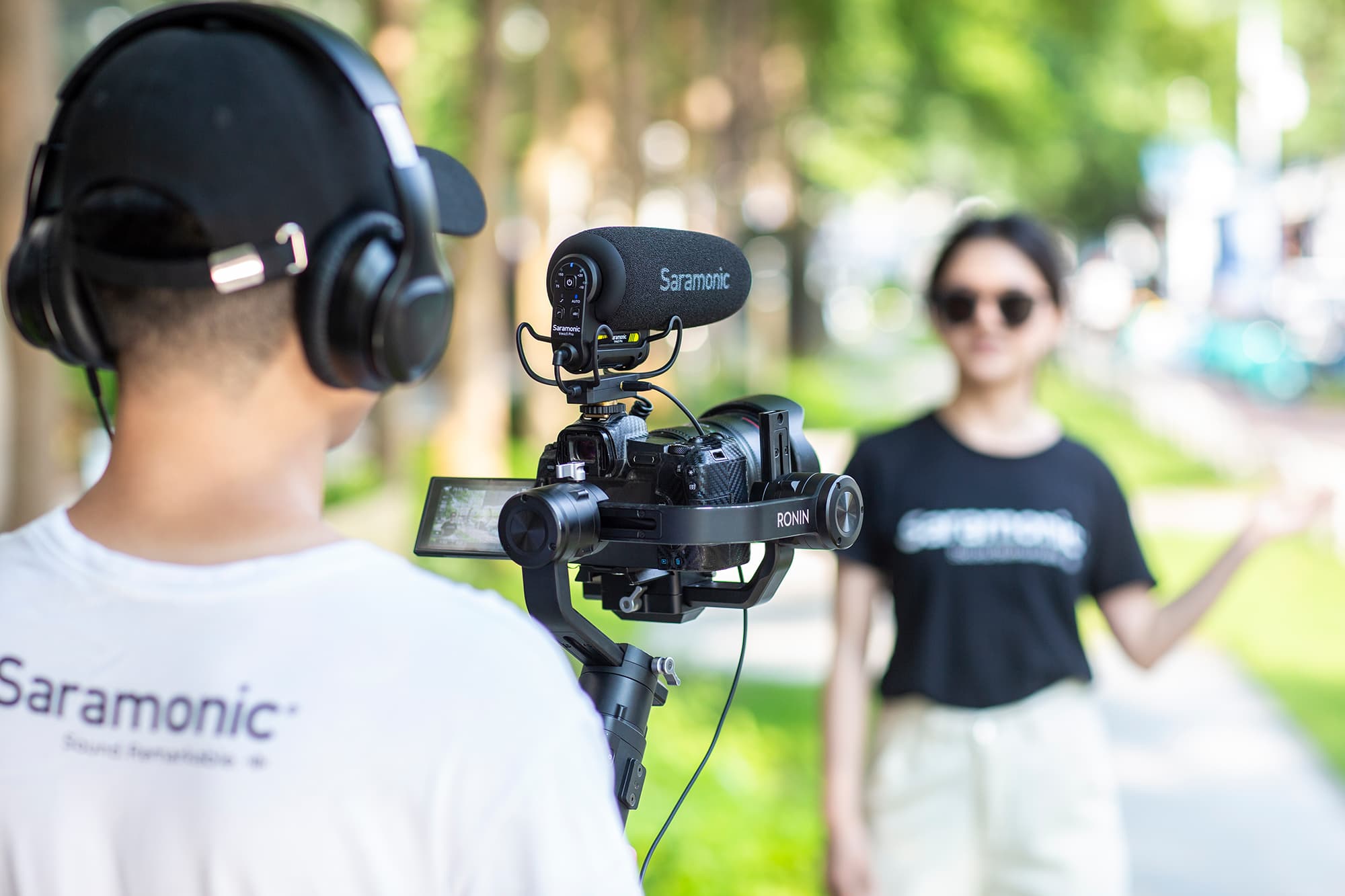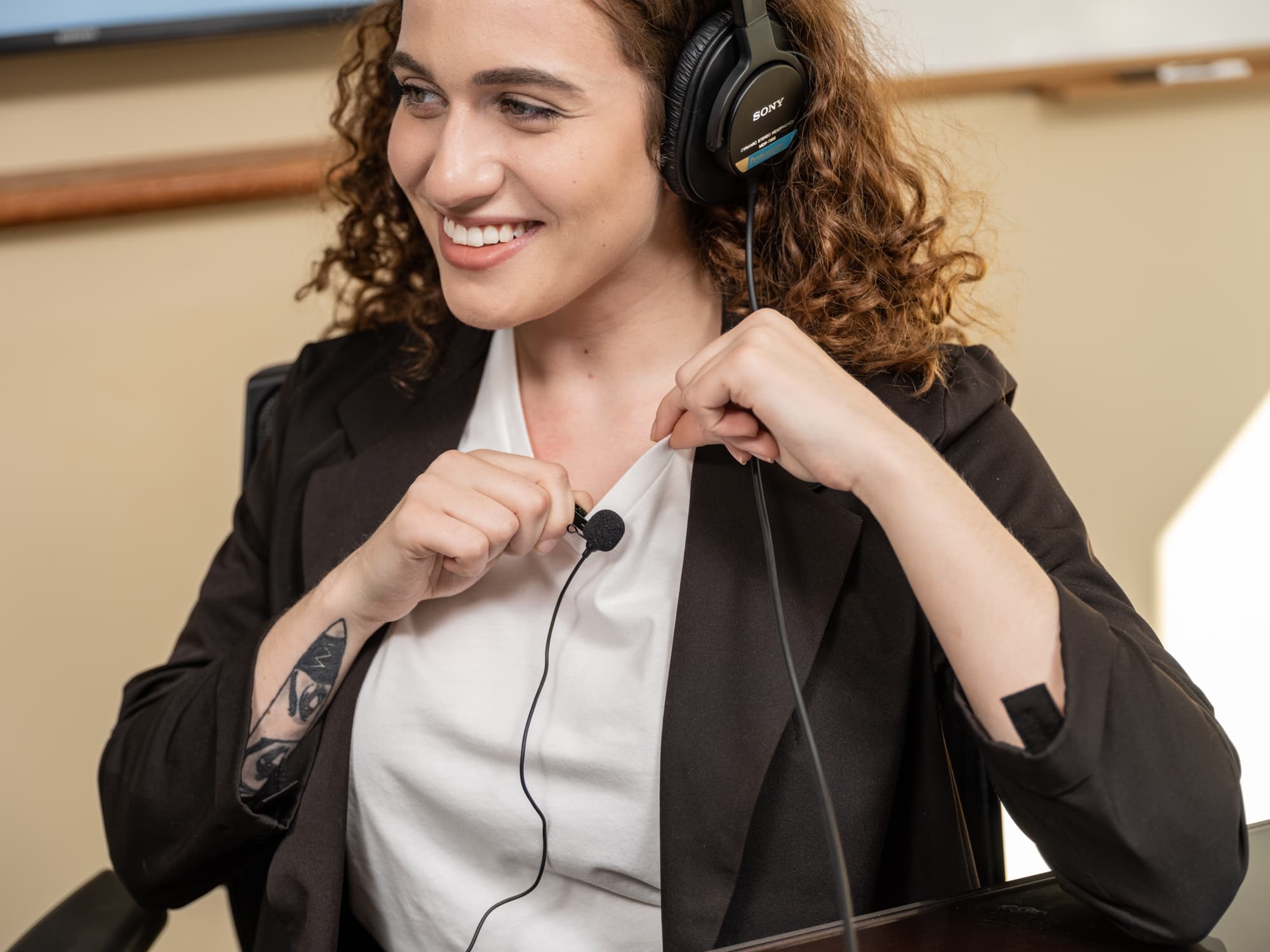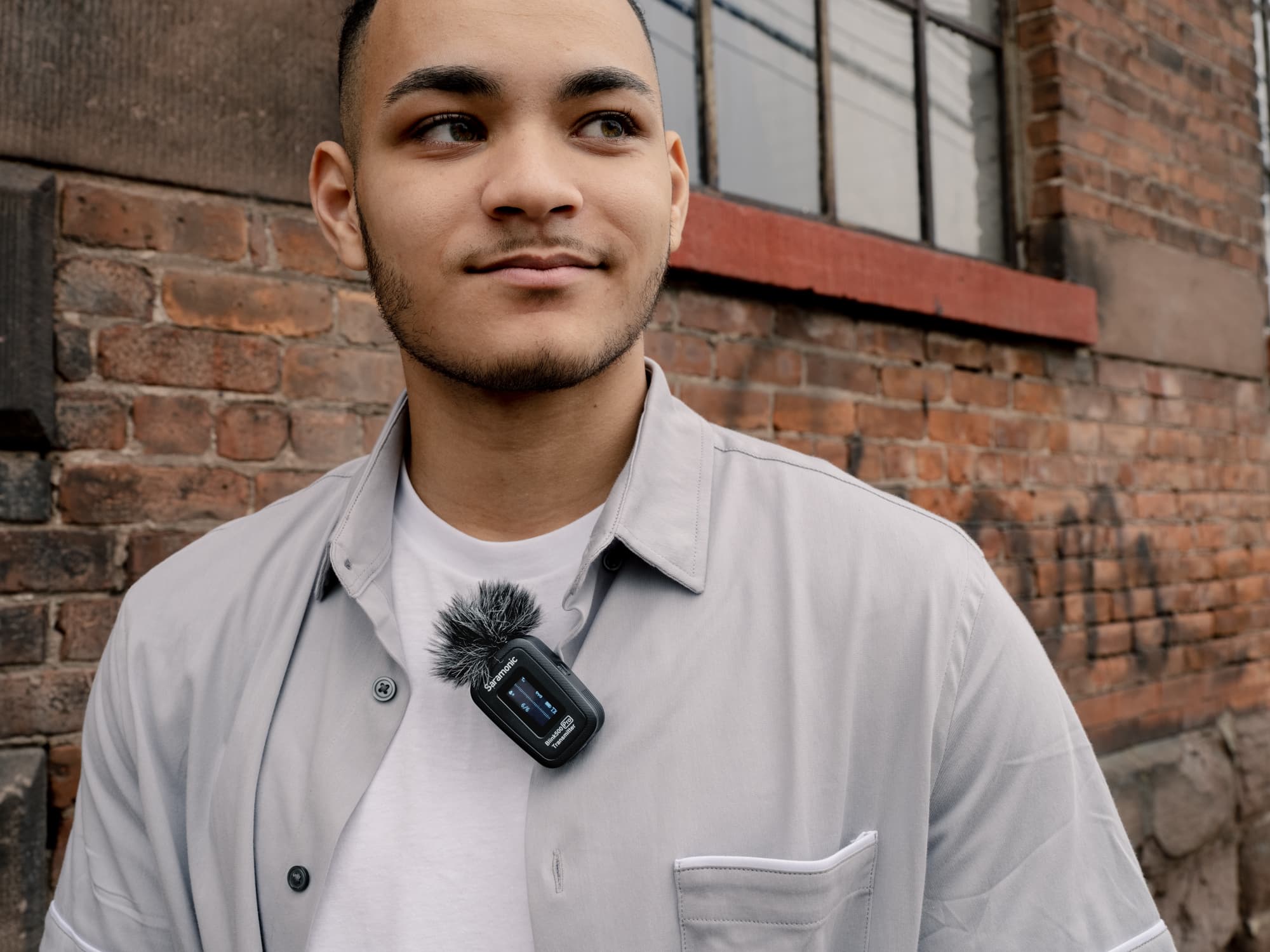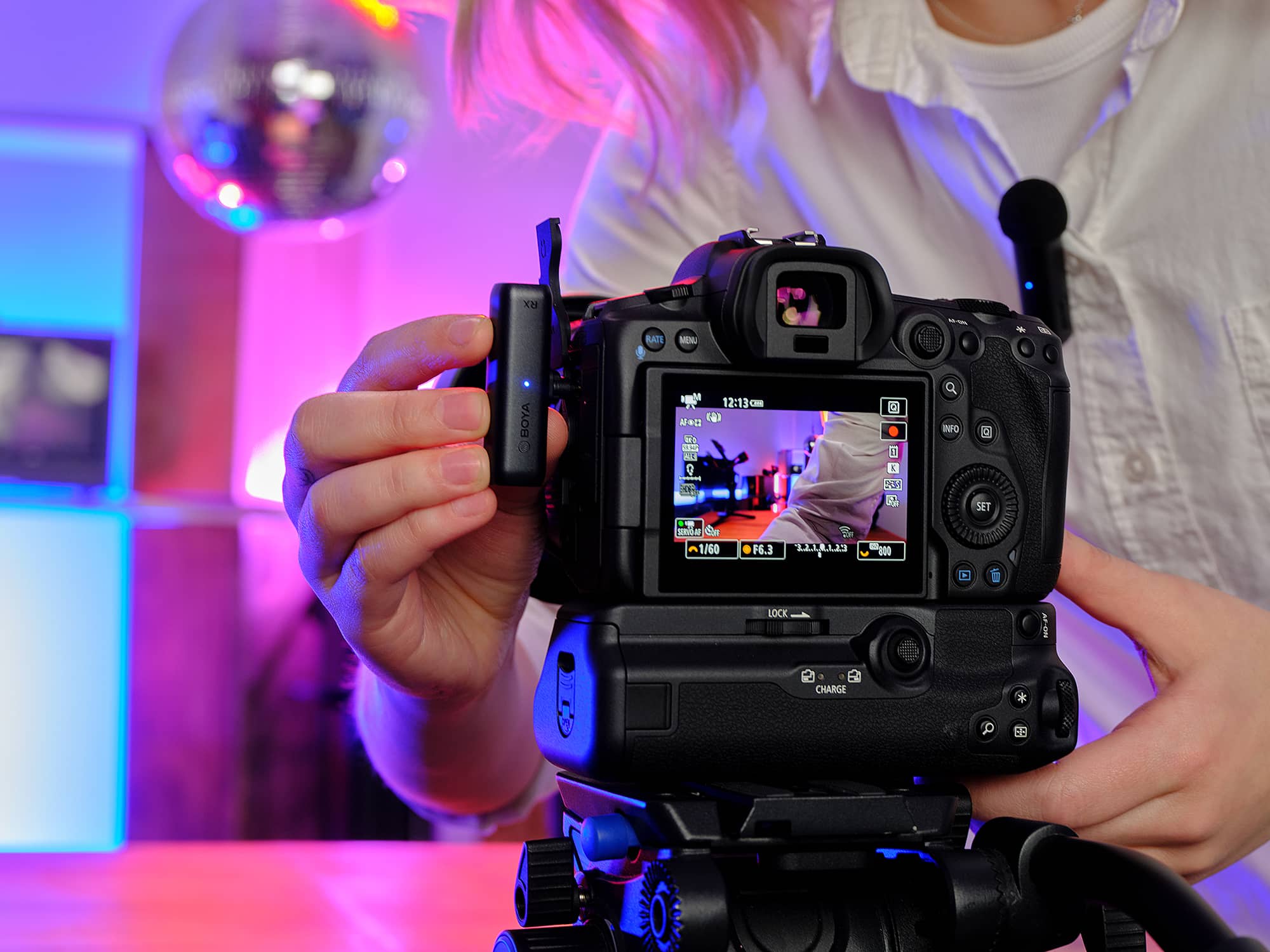Ask yourself what you prefer, a video that has a sharp and clear image but with a screaming and noisy sound that almost hurts your ears or a video with a slightly noisy image and good crispy sound quality that enhances you viewing experience. Quality audio can sometimes be more significantly more vital than the visual ingredients of a video. With a good quality audio, it´s easier to keep your viewer's interest even if the picture they're seeing isn't very good.
There are some objective standards that define great sound quality: low distortion, wide frequency response, and a dynamic range. Those are hardware-oriented standards, but they still apply to recordings to some degree. Background sound effects are other that used right will enhance your story and make your video pop.
In this guide we will guide you through different microphones and different ways of recording sound for your video.

Shotgun microphones
Capturing high-quality audio offers many challenges when shooting video. One of the biggest advantages that shotgun mics have is their narrow pickup pattern. This is a big step up from your camcorder’s built-in mic, which generally has lower quality, a “bulky” sound and a wider pickup pattern leading to more of the surrounding environment sound making it onto your recording.
Common uses of shotgun microphones are for talks or interviews, speeches in meetings and conferences. In scenarios such as these, the speaker does not need to hold a microphone and speak into it or wire a microphone on his body in order to record his speech or lecture.
Shotgun mics looks like long, narrow tubes with slits evenly spaced along each side and a capsule near the rear end. These microphones are designed to allow sound from in front of the microphone to pass through the tube to the capsule. At the same time, sounds from the sides must enter through the slits. This creates a cancellation effect that results in the rejection of surrounding sounds.
In this way, the microphone can pinpoint the source of sound and at the same time reject other noise. The shotgun microphone is the most accurate of all microphones.
The exact design and quality vary between shotgun mics. Good ones can reject nearly all sounds coming from the sides while still picking up sounds from the front. These will give you a better signal-to-noise ratio.
Another advantage of shotgun microphones is that they often sound more natural when you compare them to lavalier microphones and you don’t need to hide them.
Shotgun microphones are easy to mount on a microphone stand or a boom pole that you easily hide outside the picture.

Lavalier microphones
A lavalier microphone also known as a lav, body mic, collar mic, neck mic or personal mic is a small microphone used for interviews, television, theatre, and public speaking applications in order to allow for hands-free operation.
Roughly the size of a paper clip, and sporting a small alligator clip, it can be attached close to the subject’s mouth to produce clear, uniform sound without picking up background noise. Lavalier mics are often omnidirectional which means they reject no sound from any direction.
A lavalier microphone fits just as well whether you are filming with a camcorder, mirrorless or a smartphone. Most mics comes with a TRS or TRRS connection and are easy to connect to your device.
A wired lavalier is the most affordable and the easiest type to use. A thin cable is typically attached to miniplug. After you attach the mic, simply run the cable to your camera and plug the cable into the mic jack. Most available cables are long enough to accommodate the correct distance between your camera and your subject. If not, extension cables are available from your local electronics store.
If you want to make your lavalier microphone wireless, it is easy to connect it to a wireless transmitter from eg Sarmonic Blink series.

Wireless microphones
Wireless microphones are widely used in the content industry, broadcasting, and public speaking to allow public speakers, interviewers, performers, and entertainers to move freely while using a microphone without requiring a cable attached to the microphone. A wireless microphone system consists of a microphone (sometimes built into a transmitter) a transmitter, and a receiver.
In a wireless microphone a sound signal is converted to an electronic signal, the electrical signal passes to a transmitter which converts the signal into radio waves and sends it to a receiver that is connected to either a camera or smartphone.
Most wireless microphones use the 2.4GHz wireless transmission technology and Gaussian frequency-shift keying which minimizes interference on the signal from other radio devices.
Wireless microphones are perfect for you who create content such as vlogs, Instagram Stories, livestreams, YouTube clips, podcasts, interviews or why not boost your sound on your teams meeting.

On camera microphones
A on camera microphone has often a slim design and is designed to work with a dslr. It mounts in cameras hot shoe.
The built-in microphones on cameras don’t sound very good. They tend to pick up a lot of handling and mechanical noise from the camera itself and produces an “bulky” sound. External on-camera microphones are designed to sonically outperform the built-in microphones.
The mounts that come with on-camera microphones often feature suspension systems called “shock mounts,” that help to isolate the microphone from handling and mechanical noise.
On-camera microphones connect with either 1/8” (3.5mm) mini-plug jacks or XLR connectors. Mini-plug microphone inputs are common on consumer camcorders, video-enabled DSLR cameras, and smaller sized professional video cameras. XLR inputs are usually found in pairs on medium and larger sized professional video cameras. Before you pick out what kind of on-camera microphone to use, you should first determine what kind of mic input your camera has.
Accessories
When used outdoors, all microphones require proper wind protection. Most microphones ship with a foam windscreen. These sponge-like windscreens are helpful for light breezes or indoor air, but they cannot protect your audio in a gust of wind.
Many on-camera microphones are compatible with a kind of wind protection called “Fur Windshields.” A fur windshield is essentially a fuzzy sock that you pull over the foam windscreen that came with your microphone.
Shotgun microphones can also be used with a type of wind protection called softie indshields. You do not use the included foam windscreen in conjunction with a softie windshield. The softie windshield is a fuzzy contraption with a tough foam interior and a rubber gasket around its opening. It covers the grill of the shotgun microphone completely and offers a little more protection against wind noise than fur windshields do.
In some situations, you may find that an additional shock mount or an extension audio cable is necessary. If you are filming an interview with a shotgun microphone, a boom pole or a compact stand that you place under the person you are interviewing can be good to have.
